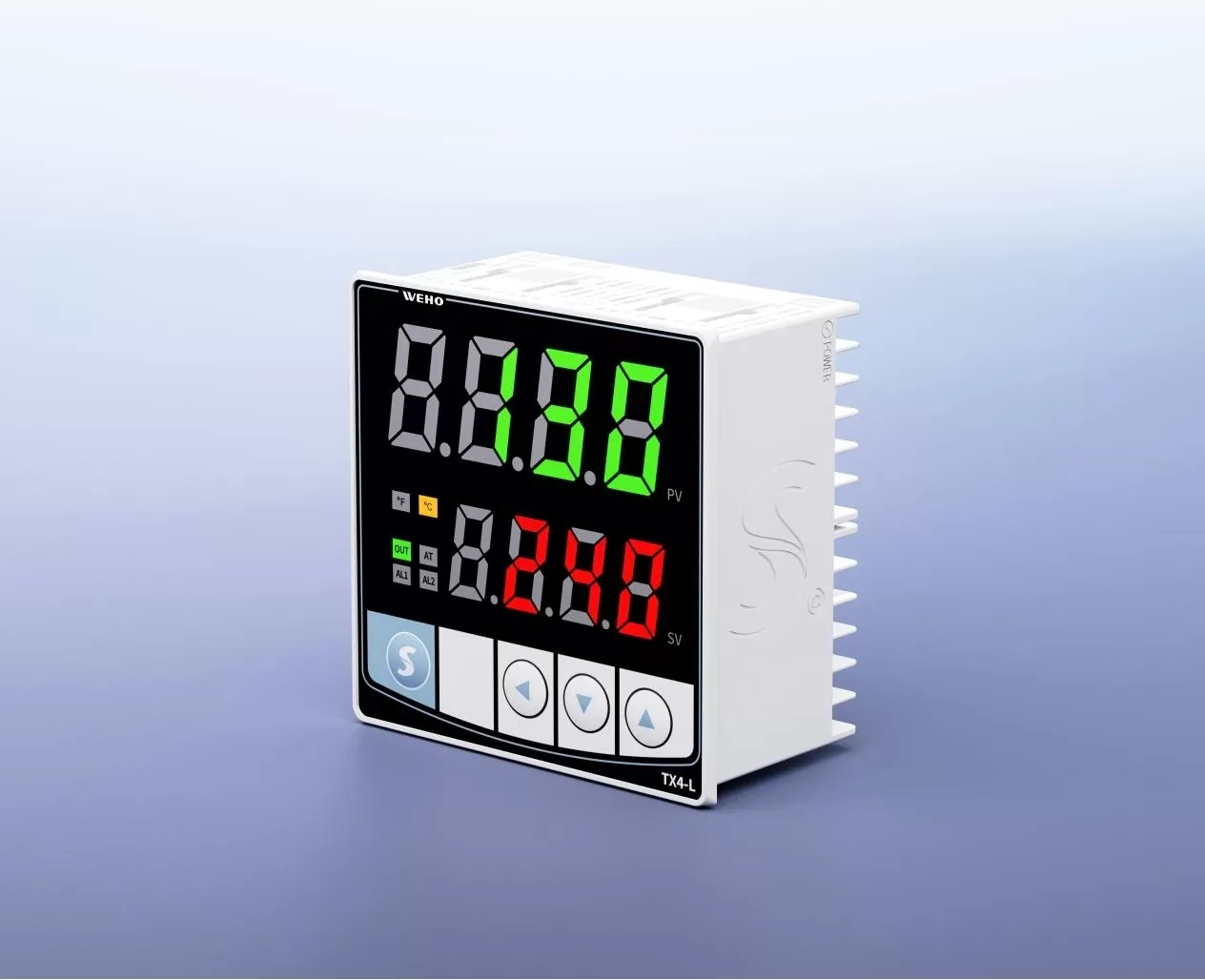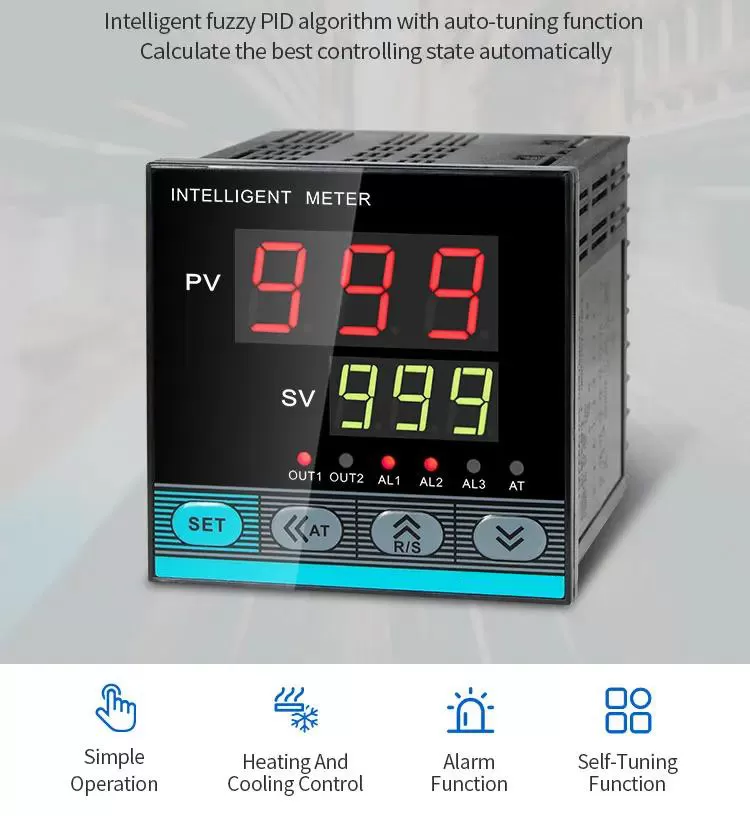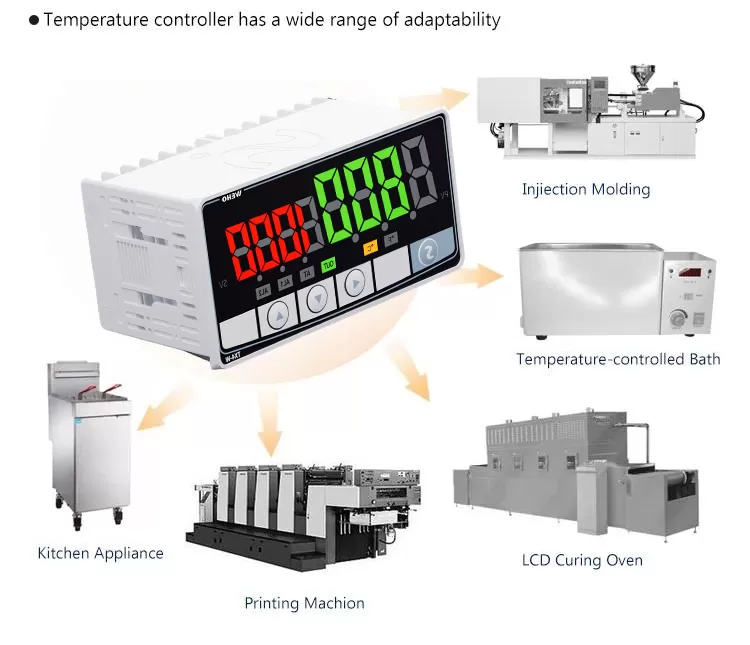Temperature control plays a pivotal role in various applications, from industrial processes to home appliances. As technology advances, two key players in the realm of temperature regulation stand out: PID controllers and traditional temperature controllers.
Understanding the differences between these devices is crucial for achieving precision in temperature management. In this comprehensive guide, we’ll delve into the distinctions between PID controllers and temperature controllers, providing you with valuable insights to make an informed purchase.
Temperature Controllers: The Basics
What is PID Controllers
A PID controller, an acronym for Proportional Integral Derivative Controller, operates on the principles of a feedback control loop mechanism.
This system identifies an error value (e(t)), calculated as the variance between a predefined setpoint and the current process value.
It then employs a solution based on three components: proportional (P), integral (I), and derivative (D), each addressing specific aspects of the control process.
What are On/Off Controllers
On/Off controllers, also known as bang-bang controllers, are a type of simple feedback control system commonly used in various applications to regulate a process or system.
Unlike more complex controllers, such as PID controllers, On/Off controllers operate in a binary fashion, toggling the system between two states – fully on and fully off – based on a setpoint and the current process value.
Deciphering the Differences: Precision, Complexity, and Energy Efficiency
In the intricate world of control systems, understanding the nuances between PID (Proportional-Integral-Derivative) controllers and On/Off controllers is crucial for making informed decisions about system regulation.
Let’s delve deeper into three key differentiators: precision, complexity, and energy efficiency.
Selecting the Right Temperature Controller for Your Application
Choosing the right temperature controller is a pivotal decision with far-reaching implications for the effectiveness, efficiency, and reliability of various applications.
To navigate this selection process successfully, consider factors such as the specific purpose, workload, and environmental conditions of your application. Thorough research, evaluation, and a critical comparison of available options are crucial steps.
Initiate the selection process by clearly defining your process specifics, assessing precision needs, and determining the temperature range involved.
Simultaneously, factor in budget constraints and evaluate ease of implementation, particularly in settings with limited technical support. Prioritize energy efficiency, acknowledging the advantages of PID controllers in making nuanced adjustments.
Additionally, confirm compatibility with existing systems and anticipate future expansion requirements. In summary, a well-informed decision-making process ensures the selection of a temperature controller that not only meets your application’s demands but also maximizes overall efficiency and effectiveness.
Applications of PID Controllers in Industrial Systems
Controllers play a pivotal role in industrial control systems, facilitating precise adjustments of desired outputs within specified ranges for various processes.
In the industrial landscape, the versatility of PID controllers shines through in their ability to adapt to diverse applications.
One significant advantage lies in their cost-effectiveness, making them a preferred choice for many industries. The flexibility of PID algorithms allows for seamless integration into different control systems, enhancing their efficiency and adaptability.
PID temperature controllers, a specific application of PID algorithms, are instrumental in numerous industrial processes.
These controllers find utility in industrial boilers, plastic injection molding machines, hot-stamping machinery, and the packaging industry. Their usage extends to critical areas such as plastic processing, oven control, water bath regulation, and furnace operations.
The ability of PID controllers to maintain precise control over temperature variables makes them indispensable in ensuring the reliability and efficiency of these diverse industrial processes.
The widespread adoption of PID controllers underscores their significance in achieving operational stability, energy efficiency, and enhanced performance across a spectrum of industrial applications.
As technology continues to advance, the adaptability and cost-effectiveness of PID controllers position them as a cornerstone in the realm of industrial automation and control.
To sum up
The choice between a PID controller and a temperature controller hinges on the specific needs of your application. When maintaining temperature within a defined range is paramount, a temperature controller might be the ideal choice.
However, for applications demanding nuanced control and precise feedback on process measurements, a PID controller offers the finesse required for accurate adjustments.
When navigating through the array of available options, carefully weigh the features and instructions accompanying each controller to align with your unique requirements.
WEHO Electronics stands as a reliable source for professional-grade temperature controllers and PID controllers. Our offerings are not only versatile but can also be customized to suit the intricacies of your application.
If you are in search of a high-quality PID controller, feel free to reach out to me at [email protected]. We are committed to providing tailored solutions that elevate the efficiency and precision of your temperature control systems.











